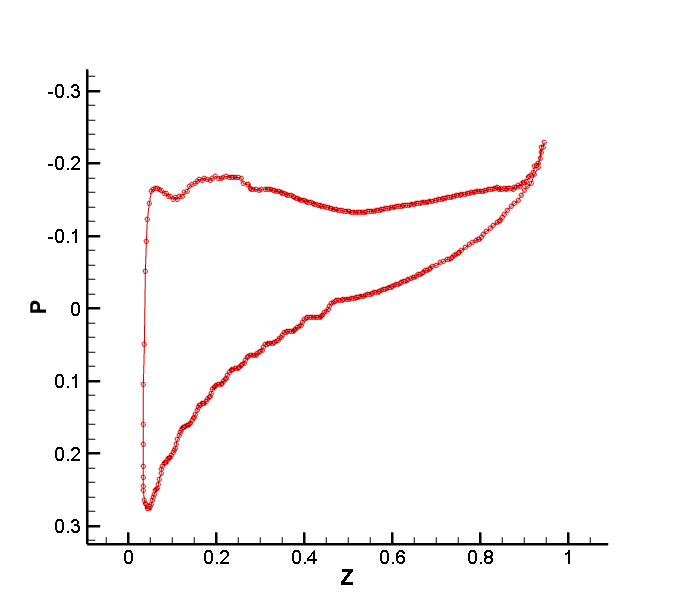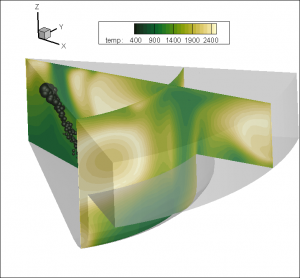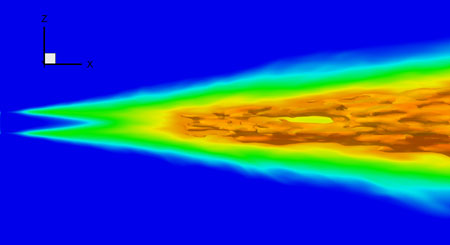

Image from the Vibroacoustic Loudspeaker Simulation: Multiphysics with BEM-FEM tutorial model. The physics are coupled with the built-in multiphysics couplings. User interface of COMSOL Multiphysics when setting up a multiphysics model of a loudspeaker that includes BEM and FEM acoustics as well as the Solid Mechanics and Shell interfaces. This is the case in the loudspeaker model depicted below. For instance, you can use FEM to model a vibrating structure’s interior, like a closed air domain, as this method can include more general material properties, and BEM to model the exterior domain, as this method is better for modeling large and infinite domains. This flexibility allows BEM and FEM to be used where they are best suited and this is all done within the same user interface, as with all other physics couplings in COMSOL Multiphysics. In addition, BEM and FEM acoustic domains can be combined by using the Acoustic BEM-FEM Boundary multiphysics coupling. For example, by using the Acoustic-Structure Boundary multiphysics coupling feature, you can couple the acoustics BEM interface to vibrating structures based on FEM.

Images from the Spherical Scatterer: BEM Benchmark tutorial model.Īn important feature is the ability to couple the BEM-based interface with FEM-based interfaces.

The left image shows the sound pressure level in two cut planes at 500 Hz, while the right image shows a comparison of the scattered field at 1400 Hz. As we will see below, the introduction of BEM allows users to solve a new category of problems that were not possible before.Ĭlassical BEM benchmark model of a spherical scatterer for which the results are compared to an analytical solution. Furthermore, the BEM interface’s implementation as a scattered field formulation means that it can handle scattering problems (see the image below). The fluid model can include dissipation by using complex-valued material data. The interface can solve 2D and 3D acoustics problems that have constant-valued material properties within each domain. The Advantages of BEM for Acoustics ModelingīEM functionality is available in the Acoustics Module as the Pressure Acoustics, Boundary Elements interface. Here, we look into the BEM functionality, examples, and BEM-specific postprocessing. This functionality expands the range of problems that can be solved with the Acoustics Module.

This interface, available as of version 5.3a of the COMSOL Multiphysics® software, can be seamlessly combined with interfaces based on the finite element method (FEM) to model, for example, acoustic-structure interaction problems. The boundary element method (BEM) is included in the Acoustics Module as a physics interface.


 0 kommentar(er)
0 kommentar(er)
